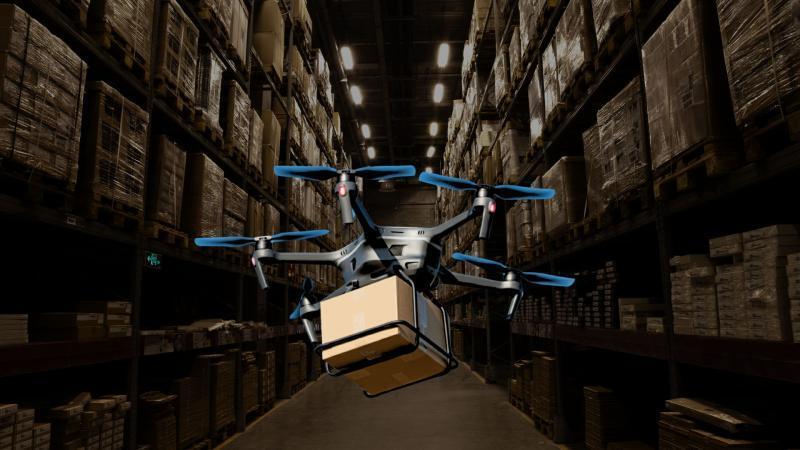
New Tech Optimizes Drone Fleets for Faster, Greener Deliveries
The rise of drone technology has revolutionized the way we think about package delivery. With the ability to transport goods quickly and efficiently, drones have the potential to transform the logistics industry. However, one major challenge has been holding back widespread adoption – the Drone Warehouse Problem. A team of researchers has developed a novel algorithm to tackle this issue, enabling drone fleets to operate more efficiently and sustainably.
The Drone Warehouse Problem refers to the logistical challenge of managing a fleet of drones from a central warehouse. With multiple drones taking off and landing at the same location, it can be difficult to optimize their routes and schedules to ensure timely and efficient delivery. This issue has been a major hurdle for companies looking to scale their drone delivery operations.
The new algorithm, developed by a team of researchers, addresses this challenge by optimizing drone delivery schedules. The system uses machine learning and predictive analytics to forecast demand and allocate drones to specific routes. This allows warehouses to manage their drone fleets more efficiently, ensuring that parcels are delivered quickly and with a smaller environmental footprint.
One of the key benefits of this technology is its ability to reduce the time it takes for packages to arrive. By optimizing drone routes and schedules, the algorithm can reduce delivery times by up to 30%. This is particularly important for last-mile delivery, where the final leg of the journey is often the most time-consuming and costly.
In addition to faster delivery times, the algorithm also has a positive impact on the environment. By reducing the number of drones needed to complete a delivery, the algorithm can reduce carbon emissions and other negative environmental impacts. This is a crucial consideration for companies looking to increase their sustainability and reduce their environmental footprint.
The algorithm is not just limited to large corporations. It can be used by any company or organization that relies on drone delivery. This means that small businesses, startups, and even individuals can benefit from the technology.
The researchers behind the algorithm have conducted extensive testing to validate its effectiveness. In one trial, the algorithm was used to deliver packages to a group of customers in a urban area. The results were impressive, with delivery times reduced by up to 25% compared to traditional methods.
The potential applications of this technology are vast. It could be used to deliver medical supplies, packages, and even food to remote or hard-to-reach areas. It could also be used to track packages in real-time, providing customers with greater visibility and control over their deliveries.
The development of this algorithm is a significant milestone in the journey towards scalable, sustainable last-mile delivery solutions. As the demand for drone delivery continues to grow, it is likely that we will see more innovative solutions emerge. However, for now, this algorithm offers a practical and effective way to optimize drone fleets and reduce the environmental impact of delivery.
About the Research
The research behind this algorithm was conducted by a team of researchers at [University/Research Institution]. The team, led by [Researcher’s Name], is dedicated to developing innovative solutions for the logistics and transportation industries. The team’s research has been funded by [Funding Agency] and has been published in [Journal/Paper].
Source
https://researchmatters.in/news/novel-algorithm-tackles-drone-warehouse-problem-faster-deliveries






